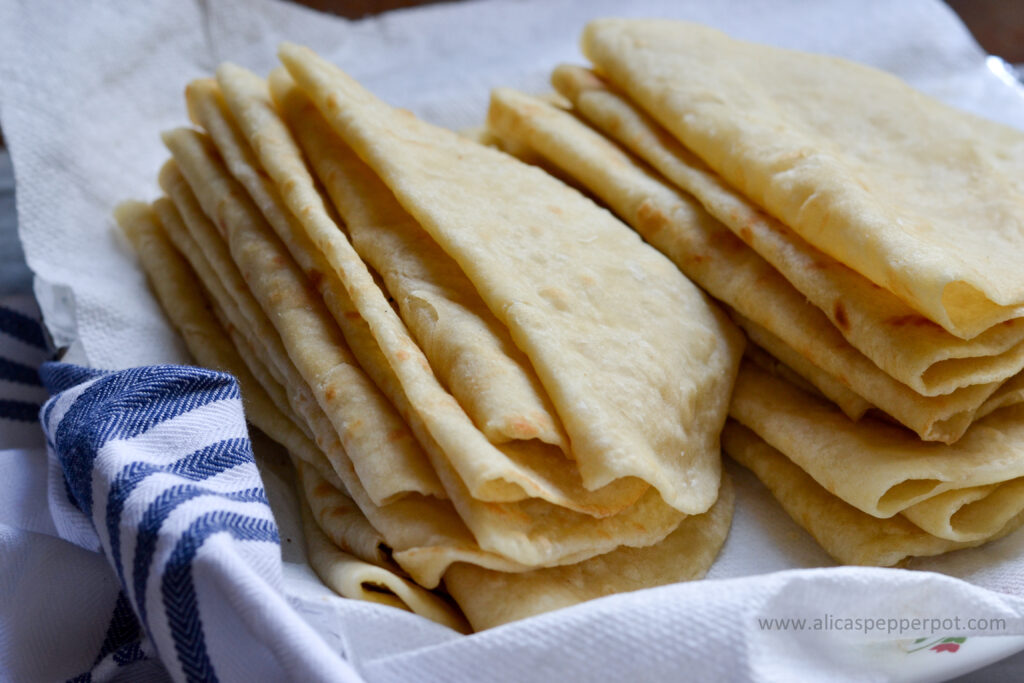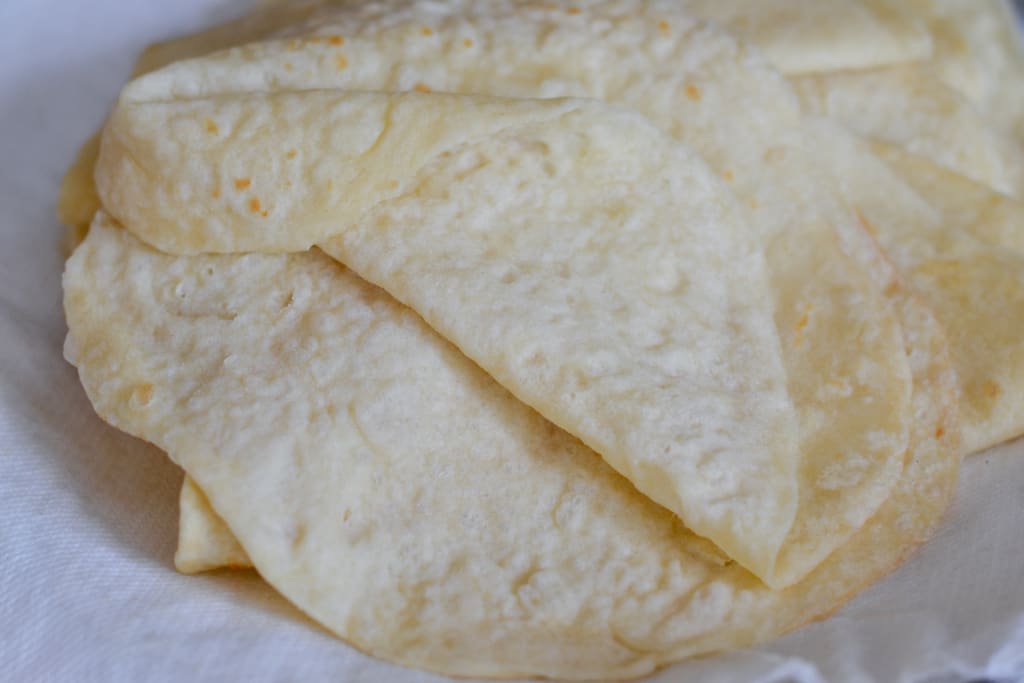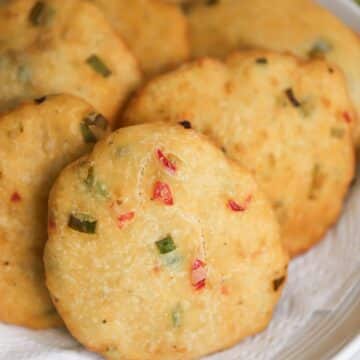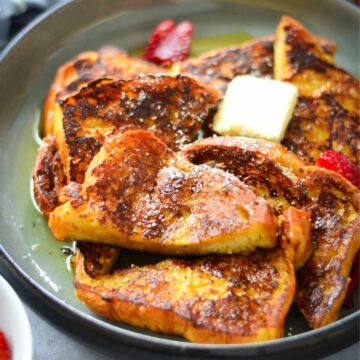
My grandmother spent the last month visiting us here in Florida. I'm always excited when she visitis because I know our time together will be filled with chats about her life experiences, family drama, and food. I was able to document some of her recipes, while other dishes we cooked together required me to pay more attention to her technique so I wasn't able to write much down. One random day we decided to make a small pot of gurumba, a sweet mango dish cooked with sugar, geera (cumin), and a few other spices. This dish is typically enjoyed with dosti roti and delicious as an anytime meal. The dosti roti was a perfect pairing because it's so thin and light.
What is Dosti Roti?
Dosti is the Hindi word for friendship and is the perfect description for this roti. Two small roti loi (dough balls) are flattened, brushed with oiled, then joined together, making them friends. The roti loi is rolled thinly and cooked on a tawah (iron skillet). Immediately after removing from the tawah, the roti is *clapped until the two rotis separate. My grandmother also makes them very small, about 6in in diameter. It can be enjoyed with gurumba, sweet rice, halwa, or any dish that pairs well with roti, which is pretty much anything.
*Clapping is a Guyanese term used to describe the method of releasing the air pockets from paratha roti. In this case, the dosti roti would be clapped to separate the two layers. Once the roti is done cooking, it is tossed up in the air and clapped with both hands repeatedly. There are many different methods used today instead of “clapping,” including placing the hot roti in two bowls or a pitcher and shaking repeatedly.

Knead dough into a smooth ball, rub a little vegetable or canola oil on top. Cover and let rest.

Gently stretch dough into a log.

Break off little pieces of dough, about the size of a golf ball. Make sure there are an even number of dough balls to pair.

Flatten two dough balls slightly.

Rub some oil on each piece using your hands.

Sprinkle with flour.

Join them together, like friends (dosti).

Let each pair rest for 10-15 minutes then roll thinly.










Jamil says
Hi Alicia how is this different from your other roti recipe. Ingredients are same. I generally roll mine out coat with oil and sprinkle flour then fold into a ball and rest before final rolling. I see in this case the two pieces are paired. Other than the prep, what's different?
Alica says
Hi Jamil,
The major difference with this roti is that it is smaller in size and is not a flaky roti like paratha. I would say it's even similar to a tortilla when you pull it apart after cooking. It's thin and light. So although the ingredients are the same the final result is very different because there is no rolling to create air pockets/flakes. Hope this helps :).
Jeni says
Alicia, now can you post a recipe for GURUMBA? That's been a childhood favorite of mine! I haven't had that in decades and I haven't a clue how to make it! Thanks for your superb recipes!
Alica says
Hi Jeni,
Yes! I sure will, it's on my list :).
Mary says
Now why have I never heard about Dosti Roti? I will have to give this a try, for sure.
Alica says
Please do! It wasn't a roti we made often- only to pair with certain dishes.
Valerie Khan says
I can't express how happy I am that the roti isn't perfectly round LOL
Back in '94 when my husband and I wed I was given the riot act by my new brother in law because my roti wasn't perfectly round. It may not be the prettiest but it all tastes the same. Xoxo
Alica says
Haha! Yes it all tastes the same in the end. My grandmother actually makes her roti square. She said that's how they did it back in Guyana during her young days.
PureThoughts says
Thank you ever so for you post.Much thanks again.
D says
Do you have a puri/poori recipe? (Not sure how to spell it), but usually it's eaten with sweet rice at religious ceremonies.
Alica says
Hi there, yes it's noted in the first line under instructions. You can use a spoon to scrape the skin off of the ginger or a small pairing knife. Hope that helps!